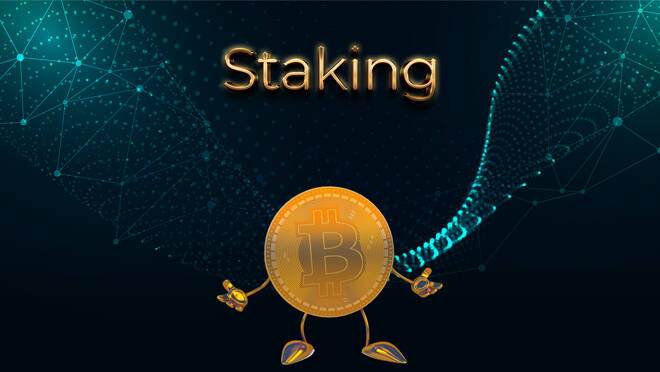Advertisement
Advertisement
What Are Staking Tokens? How It Differ From Other Tokens?
By:
Intro
All you should need to know about staking token, how it differs from other tokens.
Investors may think staking as less profitable option to mining. Although its the other way around. A cryptocurrency wallet is used to keep money safe and secure for a blockchain network. Staking is just locking up cryptocurrency in order to reap the benefits.
Proof of Stake (PoS) is an important concept to learn before diving into the world of staking. It is possible to run a blockchain more efficiently while retaining a reasonable degree of decentralisation by using PoS, a consensus method. Let’s take a look at what Proof of Stake (PoS) is and how it works.
What is Staking?
Staking cryptocurrency implies committing crypto assets to a blockchain network to facilitate and validate transactions. Proof-of-stake (POS) allows cryptocurrency owners to verify block transactions based on staked currencies. As an alternative to Proof-of-work (POW), which is used to verify blockchains and add new blocks, POS was made. POS is considered less dangerous since it arranges payments in a manner that makes an attack less effective.
At the end of the day, staking is a way to earn rewards for holding cryptocurrencies.
How Staking Tokens Differ From Other Tokens?
Trust Wallet is an example of a crypto wallet that allows one to stake their coins straight from their account. On the other side, staking is available on several exchanges. All one has to do is keep their coins in the exchange’s custody.
Play-to-win gaming platforms like Decentraland, Sandbox, and Axie Infinity are where most of the NFT staking opportunities are found, among others. All one needs to stake is a cryptocurrency wallet that has NFTs in it, and that’s all. Although, it should be noted that not all NFTs can be staked.
Staking in NFTs is a new approach to generate cryptocurrency passively. In order to get incentives, NFT holders may store their assets on DeFi platforms. They can all keep their NFT collections without having to sell them. Investors may profit from less overall supply by using NFT staking. For the most part, however, NFT stakes open the door to new applications for NFTs outside of digital art collection, but not all NFT’s can be staked unlike tokens.
The 4 Best Crypto Staking Tokens of 2022 are as follows:
Terra (LUNA)
Terra (LUNA) hit a new record of $20.05 billion in total value locked (TVL) across its 13 product lines, according to industry figures. Terra’s TVL was $11.9 billion on Dec. 1, up 68% in less than a month.
Luna is presently trading around $90, a gain of almost 12,000% from its price of $0.7 in January 2021. The coin is now valued at $34.8 billion on the market. LUNA has an annual staking payout of roughly 12.10 percent, making it one of the finest cryptos to stake.
PancakeSwap (CAKE)
PancakeSwap (CAKE) is a popular and enjoyable staking platform that allows users to stake any CAKE tokens they earn. When users stake CAKE coins, they have the option of earning extra CAKE or other currencies. Transaction costs on Binance Smart Chain are much cheaper than compared to Ethereum.
The owner may either collect their rewards or reinvest them into PancakeSwap after earning them. The CAKE coin’s yearly returns vary from 31 to 42 percent, making it one of the greatest crypto staking currencies available.
Shiba Inu (SHIB)
Shiba Inu (SHIB), also known as Shiba Token, has been more popular in recent years. With a 9.4 billion dollar market cap, it is now the 9th biggest cryptocurrency. Many investors regard SHIB as an asset to acquire and retain in their cryptocurrency portfolio. With the ShibaSwap exchange launch, SHIB holders may now stake and farm their tokens.
While Shiba Inu operates on Ethereum (now PoW), the initial quantity of SHIB was minted upon launch; therefore, it cannot be mined. SHIB holders may stake their Shiba coins on the ShibaSwap exchange for BONE tokens and 0.03 percent of the ETH swap transaction costs.
Solana (SOL)
SOL is a great staking currency due to its cheap transaction fees and fast transfers. On the Solana network, users may stake their coins with over 640 validators, but one cannot operate their own node.
It’s possible for the owner to share in the rewards that validators get on Solana if the owner gives them the stake. When the owner stakes the SOL coins, they may expect to obtain yearly returns ranging from 7–11 percent. SOL coins have soared in value in recent months, hitting an all-time high of $210.
Conclusion
Proof of Stake and staking opened the crypto market to more people who weren’t able to mine or trade cryptocurrency. Crypto staking is open to anyone wishing to contribute to blockchain consensus and governance. As the entry barriers to the blockchain ecosystem drop, staking becomes more comfortable, simpler, and more economical. With cryptocurrencies paying high interest rates, staking could be a brilliant method to earn passive income.
About the Author
Tanvir Zafarcontributor
Tanveer Zafar is a independent crypto journalist. He is passionate in covering topics about Blockchain, Cryptocurrency and Markets. He has five years of writing experience in these areas of interest. You can find his pieces featured on FXStreet, Benzinga, Investing and many more finance magazines. Tanveer has done his BS in Software Engineering at GC University. Previously, he has worked as a banker.
Advertisement
Advertisement
Advertisement
Advertisement
Advertisement
